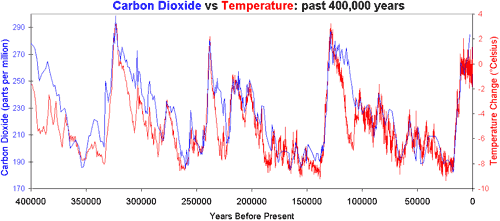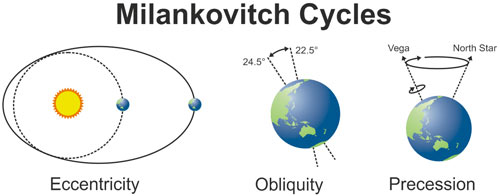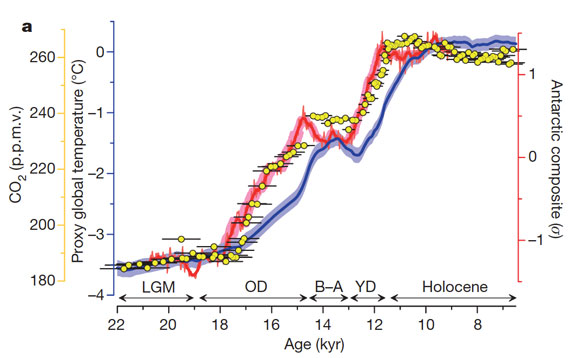 Arguments
Arguments
 Software
Software
 Resources
Comments
Resources
Comments
 The Consensus Project
The Consensus Project
 Translations
Translations
 About
Support
About
Support


Latest Posts
- Zeke's 2026 and 2027 global temperature forecasts
- 2025 SkS Weekly Climate Change & Global Warming News Roundup #51
- Skeptical Science New Research for Week #51 2025
- What are the causes of recent record-high global temperatures?
- Fact brief - Are toxic heavy metals from solar panels posing a threat to human health?
- Emergence vs Detection & Attribution
- 2025 SkS Weekly Climate Change & Global Warming News Roundup #50
- Skeptical Science New Research for Week #50 2025
- The rest of the world is lapping the U.S. in the EV race
- Fact brief - Are electromagnetic fields from solar farms harmful to human health?
- Comparing climate models with observations
- 2025 SkS Weekly Climate Change & Global Warming News Roundup #49
- Skeptical Science New Research for Week #49 2025
- Climate Adam & Dr Gilbz - Paris Climate Agreement At 10: Did It Do Anything?
- Fact brief - Does the recent slowdown in Arctic sea-ice extent loss disprove human-caused warming?
- Why the chemtrail conspiracy theory lingers and grows – and why Tucker Carlson is talking about it
- 2025 SkS Weekly Climate Change & Global Warming News Roundup #48
- Skeptical Science New Research for Week #48 2025
- Consensus machines
- Just have a Think - How an African energy revolution could save ALL of us.
- A girl’s grades drop every summer. There’s an alarming explanation.
- 2025 SkS Weekly Climate Change & Global Warming News Roundup #47
- Fact brief - Are changes in solar activity causing climate change?
- Skeptical Science New Research for Week #47 2025
- Exploring newly released estimates of current policy warming
- Climate Adam - Why the Climate Crisis is a Health Crisis
- Super pollutants are trendy, but we should be careful how we use them
- 2025 SkS Weekly Climate Change & Global Warming News Roundup #46
- Skeptical Science New Research for Week #46 2025
- On the Gates climate memo
Archived Rebuttal
This is the archived Intermediate rebuttal to the climate myth "CO2 lags temperature". Click here to view the latest rebuttal.
What the science says...
|
When the Earth comes out of an ice age, the warming is not initiated by CO2 but by changes in the Earth's orbit. The warming causes the oceans to release CO2. The CO2 amplifies the warming and mixes through the atmosph |
Over the last half million years, our climate has experienced long ice ages regularly punctuated by brief warm periods called interglacials. Atmospheric carbon dioxide closely matches the cycle, increasing by around 80 to 100 parts per million as Antarctic temperatures warm up to 10°C. However, when you look closer, CO2 actually lags Antarctic temperature changes by around 1,000 years. While this result was predicted two decades ago (Lorius 1990), it still surprises and confuses many. Does warming cause CO2 rise or the other way around? In actuality, the answer is both.

Figure 1: Vostok Antarctic ice core records for carbon dioxide concentration (Petit 2000) and temperature change (Barnola 2003).
Interglacials come along approximately every 100,000 years. This is called the Milankovitch cycle, brought on by changes in the Earth's orbit. There are three main changes to the earth's orbit. The shape of the Earth's orbit around the sun (eccentricity) varies between an ellipse to a more circular shape. The earth's axis is tilted relative to the sun at around 23°. This tilt oscillates between 22.5° and 24.5° (obliquity). As the earth spins around it's axis, the axis wobbles from pointing towards the North Star to pointing at the star Vega (precession).

Figure 2: The three main orbital variations. Eccentricity: changes in the shape of the Earth’s orbit.Obliquity: changes in the tilt of the Earth’s rotational axis. Precession: wobbles in the Earth’s rotational axis.
The combined effect of these orbital cycles causes long term changes in the amount of sunlight hitting the earth at different seasons, particularly at high latitudes. For example, the orbital cycles triggered warming at high latittudes approximately 19,000 years ago, causing large amounts of ice to melt, flooding the oceans with fresh water. This influx of fresh water then disrupted the Atlantic meridional overturning circulation (AMOC), in turn causing a seesawing of heat between the hemispheres (Shakun 2012). The Southern Hemisphere and its oceans warmed first, starting about 18,000 years ago. As the Southern Ocean warms, the solubility of CO2 in water falls (Martin 2005). This causes the oceans to give up more CO2, emitting it into the atmosphere. The exact mechanism of how the deep ocean gives up its CO2 is not fully understood but believed to be related to vertical ocean mixing (Toggweiler 1999).
The outgassing of CO2 from the ocean has several effects. The increased CO2 in the atmosphere amplifies the original warming. The relatively weak forcing from Milankovitch cycles is insufficient to cause the dramatic temperature change taking our climate out of an ice age (this period is called a deglaciation). However, the amplifying effect of CO2 is consistent with the observed warming.
CO2 from the Southern Ocean also mixes through the atmosphere, spreading the warming north (Cuffey 2001). Tropical marine sediments record warming in the tropics around 1000 years after Antarctic warming, around the same time as the CO2 rise (Stott 2007). Ice cores in Greenland find that warming in the Northern Hemisphere lags the Antarctic CO2 rise (Caillon 2003).
To claim that the CO2 lag disproves the warming effect of CO2 displays a lack of understanding of the processes that drive Milankovitch cycles. A review of the peer reviewed research into past periods of deglaciation tells us several things:
-
Deglaciation is not initiated by CO2 but by orbital cycles
-
CO2 amplifies the warming which cannot be explained by orbital cycles alone
-
CO2 spreads warming throughout the planet
Overall, more than 90% of the glacial-interglacial warming occurs after the atmospheric CO2 increase (Figure 3).
Figure 3: The global proxy temperature stack (blue) as deviations from the early Holocene (11.5–6.5 kyr ago) mean, an Antarctic ice-core composite temperature record (red), and atmospheric CO2 concentration (yellow dots). The Holocene, Younger Dryas (YD), Bølling–Allerød (B–A), Oldest Dryas (OD) and Last Glacial Maximum (LGM) intervals are indicated. Error bars, 1-sigma; p.p.m.v. = parts per million by volume. Shakun et al. Figure 2a.
Intermediate rebuttal written by dana1981
Update July 2015:
Here is a related lecture-video from Denial101x - Making Sense of Climate Science Denial
Additional video from the MOOC
Expert interview with Bill Ruddiman
Updated on 2016-10-11 by pattimer.
THE ESCALATOR

(free to republish)

























































